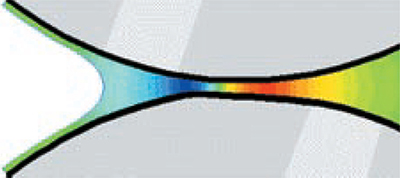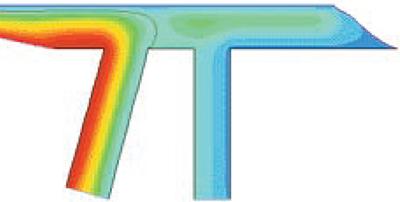Go With the Flow
A way to improve the process of applying a touch of thin-film to materials has emerged from weighty research in microgravity.
Nektonics, Inc. of Cambridge, Massachusetts, is dedicated to computational fluid dynamics (CFD), including research and development in CFD software and application of CFD techniques to engineering analysis and design. The company specializes in medical device design and coatings applications.
Started in 1987 with students graduating from the Massachusetts Institute of Technology's fluid mechanics laboratory, the firm has been awarded Small Business Innovation Research (SBIR) funding from the Lewis Research Center. Resulting from the SBIR work, Nektonics designed a powerful simulation software, called NEKTON, for the modeling and analysis of a wide range of coating flows. The software was subsequently used in the Surface Tension Driven Convection Experiment (STDCE), a low gravity fluid physics investigation flown on two Space Shuttle missions, the June 1992 flight of STS-50 and aboard STS-73 in October 1995.
Without the strong gravitational effects which normally dominate fluid flow behavior on Earth, surface tension forces primarily determine the fluid behavior in space.
This phenomenon has been graphically illustrated by astronauts drinking through a straw, floating balls of orange juice in the microgravity environment. On Earth, the same surface forces dominate the behavior of fluids when the size of the fluids is small. For example, the surface forces cause very small amounts of water to coalesce into spherical droplets. In another example, thin- film coating processes are largely governed by surface tension effects.
Nektonics researchers have identified commercial down-to-Earth uses of their space-related CFD research. The work done for Lewis Research Center has been adapted as a flagship software product for Nektonics. That tool is now used in a broader market by many companies to analyze and improve thin-film coating processes. Companies utilizing the simulation software can determine how surface tension determines the thickness and affects the quality of a coating.
Several advancements to the initial CFD software product have been made by Nektonics for industrial customers. Analysis of a wide range of coating flows including thin-film coating analysis, polymer processing, magnetic media, and glass melt flows is possible using the coating process simulation software. Polaroid, Xerox, 3M, Dow Corning, Mead Paper, BASF, Mitsubishi, Chugai, and Dupont Imaging Systems are a few of the companies that presently use the Nektonics product.
In another commercial use of the NEKTON simulation software, many years of testing were saved in the fabrication of the first continuous glucose monitor. Using the CFD simulation software, Cygnus, Incorporated designed the monitor that measures glucose levels through skin contact, eliminating the need for diabetic patients to prick their fingers to obtain blood. The ability to evaluate different designs--making use of Nektonics technology--without building prototypes, drastically reduced the amount of time needed to bring the glucose monitor to market.
Armstrong World Industries used the CFD product from Nektonics to predict the scale-up of a pilot plant air knife coating operation.
Nektonics products have found utility in paper, photographic, imaging, and printing industries for the analysis of thin coating flows. In particular, the product is ideally suited for displaying stream lines, thereby showing how the yield stress in the liquid affects the flow field and creates stagnate areas.
Nektonics is in the process of adding several new features and enhancements to its software product. The most important addition is the ability to analyze the stability of steady two-dimensional calculations to three-dimensional perturbations. This improved version of the firm's computer code is expected to be released in mid-1998.

In many roll coating applications, one of the rolls may be rubber-backed. As shown in this pressure distribution in a forward roll coater, NEKTON can predict the deformation of the soft rubber cover and its effect on flow split and meniscus location.

NEKTON’s deforming mesh technique makes for easy setup and solution of problems involving unknown free surface locations, even those involving more than one fluid as shown in this two-layer slot coater application. In this case, the location and shape of the interface between the immiscible fluid layers is also computed.













